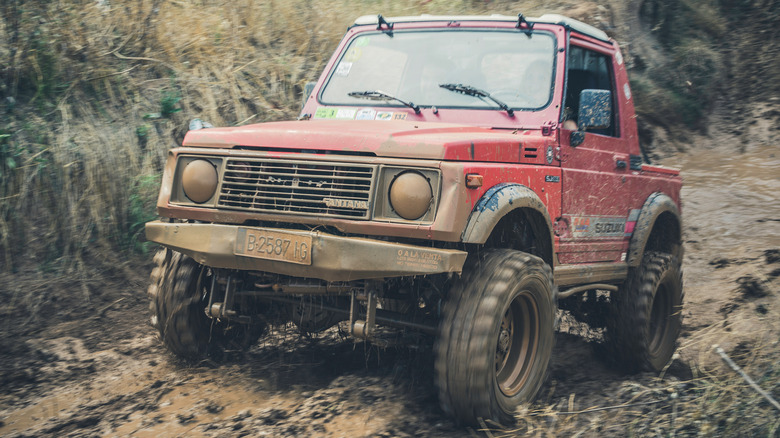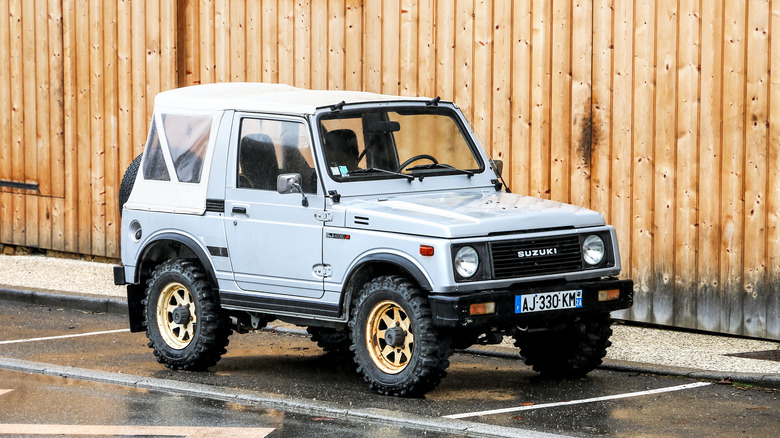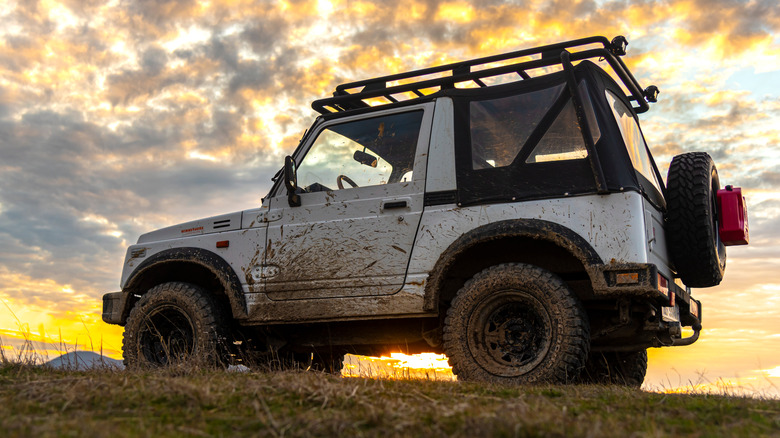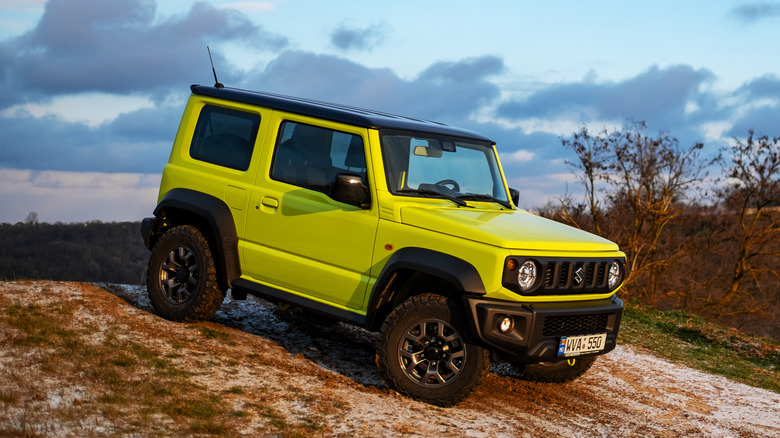The Samurai: The History Behind One Of Suzuki's Best 4x4
The "samurai" word brings to mind medieval Japanese military fighters brandishing razor-sharp swords. In automotive folklore, the Samurai (or "Jimny") is Suzuki's off-road capable mini SUV. In 1968, Suzuki acquired fellow Japanese automaker, the Hope Motor Company, after the latter struggled to mass-produce its HopeStar ON360 — a rugged all-wheel-drive mini SUV equipped with a Mitsubishi-sourced 359 cc two-cylinder, two-stroke engine.
Suzuki quickly adopted the HopeStar ON360's small yet off-road capable platform and launched the first-generation Jimny LJ10 (Light Jeep) in 1970. It was typically a re-bodied ON360 with a more potent 25 horsepower from a 359 cc Suzuki two-stroke engine. The Jimny instantly became a buyer's favorite, and outsold the Mitsubishi Jeep in its Japanese home market, which is ironic considering the original HopeStar ON360 was comprised mainly of Mitsubishi hardware.
The second-generation Jimny debuted in 1981, and the first U.S.-bound Jimnys (rebadged as the "Samurai" for Uncle Sam) began arriving at dealerships in 1995. The American version had a 63-horsepower 1.3-liter four-cylinder gas engine with overhead camshafts.
Selling like hotcakes
Despite its bigger engine, the Samurai struggled to garner momentum on smooth roads, but going off-road was a different story. The standard 4WD system has manual-locking front hubs, which makes it virtually unstoppable over inhospitable terrain. Paired with its pocket-friendly $6,550 base price and some clever marketing ads, Suzuki sold 47,000 Samurais in its maiden year, and sold 8,000 units monthly by 1988.
In response to customer feedback, Suzuki updated the Samurai in mid-1988. Popularly called the 1988.5 Samurai, it came with a revised suspension to improve the ride quality, a larger anti-sway bar to mitigate body roll, and a lower fifth-gear ratio for better highway cruising.
Other changes include a fortified transfer case, an aluminum radiator, a redesigned dashboard, a new steering wheel, and comfier seats. In 1999, Suzuki debuted the Sidekick 4x4, a marginally larger variant of the Samurai. Moreover, General Motors sold its version of the Sidekick as the Geo Tracker that same year.
The rollover fiasco
Unbeknownst to Suzuki, 1988 would be when Consumer Reports issued its "unacceptable" rating after rolling over a Samurai in vehicle testing. The CR folks discovered that the Samurai performed insufficiently in its Consumer Union Short Course Double Lane Change (CUSC) test, saying the vehicle could roll over easily during sudden turns. The Samurai's rising MSRP worsened matters, reaching $8,500 by mid-1988.
As a result, Samurai sales fell from the roof, and Suzuki responded by suing Consumers Union (the owner of Consumer Reports) in 1996 after halting U.S. sales of the Samurai a year prior. The Samurai never recovered from the negative media coverage of its rollover fiasco and subsequent controversy from the testing, and Suzuki had no choice but to pull the plug by 1995. Both parties settled in 2004, and the U.S. District Court for the Central District of California dismissed the case after eight years of arraignments.
The Samurai lives on
Before halting production, the Samurai received a few updates in the early to mid-1990s, like throttle body fuel injection, a two-wheel drive variant, and a standard two-seat configuration. The third-gen Jimny appeared in 1998 with a modernized body style while retaining its ladder-frame architecture and dual-ratio transfer case. Suzuki unveiled the fourth-gen Jimny worldwide in 2018, a boxy yet cutesy mini off-roader with all the off-road prowess of its forebearers.
Sadly, Americans may never experience the latest Jimny after the American Suzuki Corp. filed for bankruptcy in November 2012, and announced that it would stop selling cars in the U.S. as part of its restructuring. Despite this, Suzuki vehicles remain strong sellers in other markets like Japan, India, and Southeast Asia, and there are rumors of a Jimny EV entering the market soon. Will Jimny's electrification potentially pave the way for the Samurai's return to North America? We're keeping our fingers crossed on this one.



